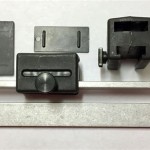How to Screen Mirror iPhone to MacBook Air
Screen mirroring, the ability to replicate the display of one device onto another, has become an increasingly useful feature for various purposes. Whether for presentations, collaborative work, entertainment, or simply enjoying content on a larger screen, mirroring an iPhone's display onto a MacBook Air offers a versatile solution. This article provides a comprehensive guide to the different methods and considerations involved in screen mirroring an iPhone to a MacBook Air.
Before exploring the various methods, it's important to understand the fundamental requirements for successful screen mirroring. Both the iPhone and MacBook Air should be connected to the same Wi-Fi network to facilitate seamless communication. Additionally, ensuring that both devices are running the latest compatible software versions is crucial for optimal performance and compatibility. Older software versions may lack support for certain mirroring protocols, leading to connectivity issues or limited functionality. Furthermore, depending on the mirroring method employed, specific software or applications may need to be installed on either or both devices.
Using AirPlay for Screen Mirroring
AirPlay, Apple's proprietary wireless streaming protocol, provides a direct and often the most convenient way to mirror an iPhone screen to a MacBook Air. While AirPlay is primarily designed for Apple TV, it's not natively supported as a receiving protocol on macOS. However, third-party applications bridge this gap, allowing a MacBook Air to function as an AirPlay receiver. These applications emulate the functionality of an Apple TV, enabling the MacBook Air to receive and display the mirrored content from an iPhone.
Several third-party applications enable AirPlay receiver functionality on a MacBook Air. Popular choices include Reflector, AirServer, and LetsView. These applications generally operate on a similar principle: they install a service on the MacBook Air that mimics an AirPlay-compatible device. Upon launching the application, the MacBook Air becomes discoverable via AirPlay on the iPhone. Users can then select the MacBook Air from the AirPlay options on their iPhone to initiate the mirroring process.
The process of using AirPlay with a third-party application generally involves these steps: Download and install the chosen AirPlay receiver application on the MacBook Air. Launch the application. Ensure both the iPhone and MacBook Air are connected to the same Wi-Fi network. On the iPhone, swipe down from the top-right corner (or up from the bottom, depending on the iPhone model) to access the Control Center. Tap the "Screen Mirroring" button. From the list of available devices, select the MacBook Air (which will be identified by the name you've given it or the name assigned by the application). The iPhone's screen will then be mirrored onto the MacBook Air's display. To stop mirroring, repeat the process within Control Center and select "Stop Mirroring."
When selecting an AirPlay receiver application, consider factors such as compatibility with the macOS version, features offered (such as recording capabilities or resolution settings), and pricing. Some applications offer free trials, allowing users to test the functionality before committing to a purchase. It's also crucial to ensure that the chosen application is from a reputable source to avoid potential security risks or malware.
Utilizing QuickTime Player for Screen Recording and Mirroring
While primarily known as a media player, QuickTime Player on macOS offers a built-in screen recording feature that can be cleverly adapted for screen mirroring an iPhone. This method relies on connecting the iPhone to the MacBook Air via a Lightning cable and utilizing QuickTime Player's movie recording function to capture the iPhone's display in real-time.
This method does not truly "mirror" the screen in the traditional wireless sense, but rather displays a live feed of what's on the iPhone screen within a QuickTime Player window. While it requires a wired connection, it offers a stable and reliable mirroring experience without relying on third-party applications or Wi-Fi connectivity. This can be especially useful in environments where Wi-Fi is unreliable or unavailable.
The steps involved in using QuickTime Player for screen mirroring are as follows: Connect the iPhone to the MacBook Air using a Lightning cable. Open QuickTime Player on the MacBook Air. In the QuickTime Player menu bar, select "File" > "New Movie Recording." A recording window will appear. Next to the record button, there is a small arrow pointing down. Click this arrow to reveal a menu of options. Select your iPhone from the "Camera" drop-down menu. The QuickTime Player window will now display the iPhone's screen. Adjust the size of the QuickTime Player window to suit your viewing preferences. To stop the mirroring, simply close the QuickTime Player window.
One of the advantages of this method is its simplicity and the absence of any additional software requirements. However, the reliance on a wired connection and the presence of the QuickTime Player window surrounding the mirrored display might be considered drawbacks. Additionally, this method might introduce a slight delay or latency compared to wireless solutions, especially with older hardware.
Exploring Third-Party Mirroring Applications
Beyond AirPlay receiver applications, a range of third-party applications specifically designed for screen mirroring offer alternative solutions. These applications often provide cross-platform compatibility, supporting mirroring between iOS devices and various operating systems, including macOS. They often have additional features beyond basic mirroring capabilities.
Applications such as AnyDesk, ApowerMirror, and TeamViewer offer dedicated screen mirroring functionalities. These applications typically require installation on both the iPhone and the MacBook Air. Once installed and configured, they establish a connection between the devices, enabling the iPhone's screen to be displayed on the MacBook Air. The setup process varies depending on the application.
Generally, the process involves: Downloading and installing the application on both the iPhone and the MacBook Air. Launching the application on both devices. Following the on-screen instructions to establish a connection. This often involves entering a code or granting permissions on one or both devices. Once connected, the iPhone's screen will be mirrored onto the MacBook Air.
These applications often offer features beyond basic screen mirroring, such as remote control capabilities, file transfer, and annotation tools. Remote control enables users to control the iPhone directly from the MacBook Air, while file transfer allows for seamless transfer of files between the devices. Annotation tools enable users to draw or write on the mirrored screen, which can be useful for presentations or collaborative work.
When selecting a third-party mirroring application, it's crucial to consider the features offered, the compatibility with your devices, the pricing structure, and the security implications. Review user reviews and test free trials to assess the performance and reliability of the application before committing to a purchase. Pay close attention to the permissions requested by the application to ensure that your privacy is protected.
Beyond the core mirroring functionality, several factors can influence the quality and performance of the mirrored display. Network congestion, the processing power of both devices, and the resolution settings all play a role. Optimizing these factors can significantly improve the overall mirroring experience.
Minimizing network congestion by closing unnecessary applications that are consuming bandwidth can help to improve the stability and responsiveness of the mirrored display. Reducing the resolution of the mirrored display can also reduce the processing load on both devices, especially if they are older or have limited processing power. Some mirroring applications allow users to adjust the resolution settings to optimize the performance based on their specific hardware and network conditions. Finally, ensuring both the iPhone and MacBook Air are free from excessive background processes can also contribute to a smoother mirroring experience.

2024 Updated How To Mirror Iphone Mac With 5 Methods

2024 Updated How To Mirror Iphone Mac With 5 Methods
How To Mirror Your Iphone Screen A Macbook

How To Use Apple Airplay Mirror Your Iphone Mac Screen On Tv Roku And More Cnet

How To Use Apple Airplay Mirror Your Iphone Mac Screen On Tv Roku And More Cnet

2024 How To Mirror Iphone Display Mac Ios 14 And Big Sur

How To Mirror Iphone Mac Without Hassle

How To Airplay From Iphone Or Ipad Mac 9to5mac

How To Mirror Iphone Windows Pc Laptop Mac Full Guide

How To Mirror Iphone Mac Wirelessly Full Guide








